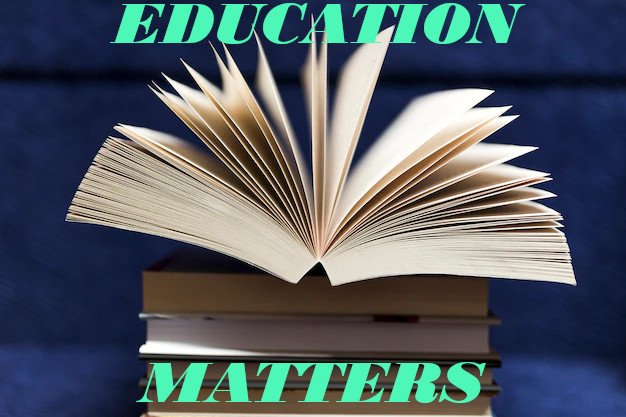Education Matters: 21st Century Teaching

Your continual engagement in our series, “Education Matters”, fills me with deep gratitude. I appreciate your time, encouragement, and most importantly, your willingness to reflect on these pivotal educational matters. As we progress, this article explores the urgency for empathetic teaching, student involvement in decision-making, interactive classrooms, critical and creative thinking skills, and the seamless integration of reading and writing across all subjects.
To Begin with
Education systems around the world are evolving to meet the demands of the 21st century. With rapid advances in science and technology, there is a growing emphasis on multifaceted competencies beyond traditional academic skills. As early as 1991, the United States Secretary’s Commission on Achieving Necessary Skills (SCANS) issued a seminal report highlighting the importance of information processing, technology utilization, resource management, interpersonal skills, and other applied skills for the modern workplace. This sparked many countries to reform their curricula to focus on broader competencies like creativity, critical thinking, communication, and collaboration, known as the 4Cs, as outlined by the Partnership for 21st Century Skills.
In Nepal, we observe a unique interplay between these global educational developments and our local dynamics. Nepalese students and parents, with access to global tools and connections via social media, are keenly aware of the disparities between the global educational trajectory and Nepal’s traditional classroom culture and struggling educational system. This awareness is one of the reasons to trigger a sense of Fear of Missing Out (FOMO), propelling many to leave Nepal to pursue higher education elsewhere. The urgency to bridge this gap is manifest. To stem this trend and face the challenges to our national educational landscape, we must align our educational practices with contemporary global standards. This alignment necessitates fostering an environment that not only nurtures 21st-century skills but also emphasizes the essential role of teachers in achieving these significant roles.
Pedagogical-Foundations
The evolution of teaching is a remarkable journey, one that we’ve been discussing throughout this “Education Matters” series. With the rise of classroom technology, teachers now have an extensive knowledge base at their disposal and are increasingly adept at meeting students’ diverse needs. The guidance found in modern curriculum design—focused on student dynamics and rich textual engagement—has contributed to enhanced student achievements on a global scale as evidenced by recent reports from international large-scale assessments such as PISA and TIMMs. Yet, in developing regions like Nepal, a deficiency in pedagogical foundations among educators has fostered a sense of despair among globally connected, tech-savvy students, leading to burnout and attrition.
Teaching and learning in today’s world must be anchored in substantial pedagogical foundations. Theories such as Cognitive Load Theory, which emphasizes the efficient processing of information; Constructivism, which accentuates the learner’s active role; Social Learning Theory, which focuses on observation-based learning; and Information Processing Theory, which examines the way we perceive and structure information, provide a solid theoretical base. These principles not only enrich our understanding of the learning process but also offer practical strategies for educators. Complementing this, frameworks like Bloom’s Taxonomy, which classifies learning objectives, and knowledge of Cummins’s cognitive load quadrants, present valuable insights, and possible directions for enhancing teaching and learning in 21st-century Nepal.
Emotional Intelligence
In my own experience in the Nepalese teaching and learning endeavor, the traditional system of rigid authority and lack of empathy towards students is not only outdated but also ineffective. Often, students are treated as opponents rather than partners, expected to accept everything their teachers, parents, and school administrators say without questioning the merit. This approach has created a situation, where speaking out is punished, new ideas are discouraged, and being different is not allowed. Decades later, stories of corporal punishments to high school and even innocent elementary students are still commonplace. The situation has become even more complex with the use of modern technology, leading to new challenges like mental health, anxiety, and stress. It’s time we change our route and adhere to 21st-century teaching practices. This begins with respecting students as one of the key stakeholders in teaching and learning, recognizing their voices, and fostering a collaborative environment where they feel valued and engaged. The era of treating students as mere recipients of knowledge MUST END, and a new era of partnership, empathy, and mutual respect MUST BEGIN.
In this context, Emotional Intelligence (EI) can be a transformative tool to support students, teachers, and administrators alike. EI defined as the ability to recognize, understand, and manage emotions, has emerged as a cornerstone in 21st century teaching (Goleman, 1995). With its focus on self-awareness, empathy, and social skills, EI promotes resilience, adaptability, and self-motivation – key traits in today’s fast-paced world (Intelligence as a Key Leadership Skills, by Andrea Ovans, 2015). Innovative programs like those developed by the Yale Center for Emotional Intelligence (YCEI) emphasize the importance of emotions in education and have shown positive outcomes, including better performance in school and fewer attention and learning problems (Emotions Matter, YCEI).
Embracing EI in Nepal’s educational system, teachers can facilitate EI development in several ways. Teachers can model self-awareness by acknowledging their own emotions. They can teach self-regulation strategies like calming breaths and self-talk. Motivation is encouraged through autonomy, mastery, and purpose. Empathy develops by having students share feelings and perspectives and social skills are strengthened through group work, class discussions, and conflict resolution. A supportive classroom fosters EI growth.
Decision-Making Partnership
Traditionally, Nepali classrooms have followed a hierarchical model where teachers make most instructional decisions without students' and parents’ input. Standing on millions of independent research findings all over the world, we can confidently say that involving students and parents as partners in decision-making fosters engagement and motivation, enhancing academic achievement and building crucial life skills (refer to seminal research by Kellie, J. Anderson, Joyce L. Epstein, Don Davis, etc. for benefits of parents’ involvement, and Donald C. Clark, Leonard C. Hawes, Geoff Whitty, Stuart Critchley and others for student participation). Simple strategies like providing assignment choices give students autonomy while developing decision-making capacity. Regularly soliciting student feedback on lessons and activities makes learning more relevant to their needs and interests. Thus, classrooms that empower students through participation equip graduates with the experience in collaborative decision-making needed to excel in today’s world.
This collaborative approach is especially important given the broader Nepali tendency of excluding stakeholders in key decisions, whether in educational policymaking or household dynamics. The recent government move to implement an Educational Reform Bill seemingly without consultation epitomizes this top-down trend. Such unilateral decisions result in a disconnect between what teachers aim to teach and how students actually learn. Research emphasizes the benefits of student involvement through strategies like collaborative curriculum design, student-led conferences, democratic classrooms, and regular feedback mechanisms. When students feel ownership over their learning, they become more motivated and engaged. This not only improves outcomes but develops capable graduates able to thrive in the modern world.
Collaborative Learning
When we start involving parents and students in the decision-making process, our path to achieving everyday classroom activities and objectives can be realized through something called collaborative learning. Collaborative learning is an instructional approach where students work together in small groups to accomplish shared goals, extending beyond traditional group projects to include activities like discussions, problem-solving, and peer teaching. This method fosters critical thinking, communication, teamwork, leadership, cultural awareness, and engagement with technology, all of which are vital for 21st-century success. By utilizing techniques such as think-pair-share discussions, jigsaw activities, peer review, and collaborative tools, teachers can seamlessly integrate collaborative learning into K-12 classrooms. Seminal studies by Johnson & Johnson (1999), Slaving (1996), & Vygotsky (1978), and others demonstrate that this approach significantly boosts academic achievement, motivation, and retention, preparing students to excel in our interconnected global society.
Implementing collaborative learning requires establishing clear objectives, flexible groupings, and engaging tasks that cater to diverse aptitudes. Educators play a pivotal role in facilitating collaboration by teaching social skills, ensuring individual accountability, and providing digital resources. Such strategies create a dynamic environment where students take charge of their learning, educators align with contemporary goals while transforming classrooms into places that stimulate intellectual curiosity, empathy, and resilience.
Thought Cultivation
Critical and creative thinking represent complementary cognitive abilities that are vital for education and life success in the 21st century. Critical thinking involves the objective analysis and evaluation of information to make reasoned judgments. Rooted in the Socratic method’s emphasis on questioning assumptions, critical thinking stresses logic, reasoning, problem-solving, and informed decision-making. Teachers can cultivate it through open-ended questioning, problem-solving challenges, evidence-based debates, and reflective journaling. Alternatively, creative thinking encompasses generative, unconventional thought focused on conceptual flexibility, originality, and finding unique solutions. With origins traced to psychologists like J. P. Guilford and innovators like Edward de Bono, creative thinking is nurtured via brainstorming, arts integration, and intellectual risk-taking. Seminal research by Ennis (1985), Paul & Elder (2008), Torrance (1974), and Ambile (1996) lays the foundation for understanding and nurturing these skills.
Building on this foundation, the application of Bloom’s Taxonomy provides a hierarchical structure to facilitate thought cultivation. With its six levels—knowledge, comprehension, application, analysis, synthesis, and evaluation—Bloom’s framework guides educators in designing learning experiences that progress from basic information recall to higher-order cognitive processes. Integrating critical and creative thinking through this taxonomy not only aligns with modern educational goals but nurtures intellectual curiosity and adaptability. In the context of Nepal, where bridging the gap between traditional pedagogy and global educational standards is vital, fostering these thinking skills can be a transformative step. By actively engaging students in critical analysis and creative exploration, we can cultivate minds that are not only well-prepared for academic challenges but are also capable of innovative problem-solving and leadership in an ever-changing world.
Growth Mindset
In our exploration of 21st-century education, the concept of a growth mindset emerges as an essential element that aligns with our global educational goals and resonates powerfully within Nepal’s unique educational context. Originating from the pioneering work of Carol Dweck, the growth mindset theory posits that intelligence and abilities are not static but can be developed through persistent effort, strategic learning, and supportive mentorship. Students who embrace a growth mindset are more likely to persevere in the face of challenges, engage positively with learning, and ultimately achieve greater success.
In contrast to a fixed mindset, where intelligence is viewed as an immutable trait, a growth mindset fosters resilience, adaptability, and a positive attitude towards learning. This approach is particularly relevant in Nepal, where traditional methods have often focused on rote memorization and exam-oriented teaching. Embracing a growth mindset can pave the way for a transformative shift, encouraging students to engage critically with their learning, take ownership of their progress, and develop skills that align with the demands of the modern world.
Educators play a vital role in nurturing a growth mindset in their students. By focusing on effort rather than innate ability, providing opportunities for revision and improvement, teaching the malleability of the brain, and guiding students through challenges, teachers can create an environment where growth and perseverance are celebrated. This approach aligns with the broader themes of empathy, emotional intelligence, and student empowerment that are central to 21st-century teaching practices.
The implementation of growth mindset principles has been associated with significant benefits in motivation, engagement, and academic performance. It not only enhances the learning experience but also empowers students to thrive in a rapidly changing world, contributing positively to the ongoing evolution of Nepal’s educational landscape. It provides teachers with concrete ways to foster grit and unlock students’ potential.
Reading and Writing Integration
In the context of Nepal’s education system, the neglect of reading and writing is a pressing issue, often eclipsed by an emphasis on rote learning for high-stakes, year-end exams. This methodology has constrained creative thinking and left students, even those at higher education levels, grappling with foundational literacy skills. This scenario is exacerbated by time constraints in public schools and a monotonous teaching approach that emphasizes memorization over understanding. The need for change is underscored by research, such as the meta-analysis by Graham, Kiuraha, & Mackay (2020), which highlights the learning benefits of integrating reading and writing across subjects. Further, studies by Gerde, Bingham, & Wasik (2012) stress writing as a vital emergent literacy skill, emphasizing the importance of modeling and engaging students in meaningful writing activities.
Addressing this deficiency necessitates a deliberate shift towards an integrated approach, centralizing reading and writing in learning across all subjects. Educators must be equipped with knowledge of cognition and the interconnected process of reading and writing. A cultural transformation is needed to ensure students attain competency in these skills by the time they graduate high school, thereby easing their transition into higher education and the workforce. This endeavor involves implementing strategies such as promoting independent reading, enhancing literacy integration across disciplines, leveraging technology, and fostering collaboration. By adopting these approaches, Nepal’s education system can align with 21st-century demands, preparing students to thrive in an interconnected global society and contribute to the transformation of the Nepalese education landscape.
Call to Action
The insights shared in this “Education Matters” series reveal the multifaceted nature of 21st-century education. From pedagogical foundations to emotional intelligence, student empowerment to critical thinking, the demands of modern learning are diverse yet interconnected. In Nepal’s rapidly evolving landscape, aligning with global standards is an urgent priority. This requires a comprehensive approach – one that equips students with essential skills while emphasizing the pivotal role of empathetic, collaborative teaching.
The path forward entails deep reflection and a shared commitment to change. Educators can implement strategies like growth mindset, literacy integration, and decision-making partnerships. Administrators can lead professional development focused on empathy, creativity, and personalized learning. Policymakers need to consult all stakeholders when formulating reforms. This journey demands hard work, but the payoff is empowered graduates ready to excel as capable, compassionate 21st-century leaders. I invite readers to dive deeper into these insights, engage with fellow educators, and unite in transforming Nepal’s education system to meet the challenges of the 21st world.
I extend my heartfelt thanks to each of you for engaging with this series, “Education Matters”. Your time and reflections contribute to a broader conversation that is vital to our educational landscape. Should you have any feedback or questions, please feel free to reach out to me at [email protected]. In the next article entitled “Ethics, Culture, and Curriculum Adjustment”, we will delve into the societal influences shaping educational goals, highlight the need for inclusivity, autonomy, and cultural relevance, and advocate for an educational approach that not only aligns with global standards but also preserves the integrity and heritage of our unique Nepali context.



Leave Comment